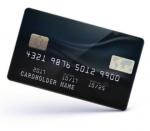However, buying your first motorcycle is a significant decision. It's essential to make an informed choice to ensure your investment brings you joy and not regret. In this guide, we'll take you through the top five factors you need to consider when buying a motorcycle for the first time. From research and inspection to test rides and price negotiation, we'll cover everything you need to know.
By the end of this article, you'll be well-equipped to choose a motorcycle that not only fits your budget but also suits your needs and riding style. So, let's dive into these crucial factors to make your first motorcycle purchase a success!
Understanding Your Riding Needs
Before you start browsing motorcycle listings, it’s crucial to identify your specific riding needs. Understanding how you'll be using your motorcycle can significantly influence your choice. Are you planning to commute daily, embark on weekend road trips, or explore off-road trails?
If your primary use is commuting in an urban environment, a lightweight and fuel-efficient bike, such as a standard or a scooter, may suit you best. These bikes are easy to handle in traffic and offer great mileage. For long-distance touring, a touring bike or cruiser with added comfort features like saddlebags and a comfortable seat might be more appropriate. If you're an adventure seeker who plans to take on rugged terrains, an adventure bike or dual-sport motorcycle designed for both on-road and off-road riding should be on your radar.
Consider how often you'll be riding and the types of roads you'll be on. Think about your long-term goals too. Are you looking for a motorcycle that can grow with your experience level or one that you might upgrade in a few years? Reflecting on these aspects will help you choose a motorcycle that aligns with your daily use and future aspirations, ensuring you get the most enjoyment and practicality out of your purchase.
Setting Your Budget
Before you start shopping for your first motorcycle, it's essential to establish a clear budget. Knowing how much you can afford will not only help you narrow down your options but also keep you focused on bikes that fit within your financial means.
When setting your budget, consider the costs beyond just the purchase price of the motorcycle. You will need to factor in expenses like insurance, which can vary significantly based on the type and value of the bike, as well as your riding experience. Additionally, maintenance costs are an ongoing expense, including routine servicing, parts replacement, and any unforeseen repairs that may arise.
Don't forget about the cost of essential gear. Safety gear like helmets, jackets, gloves, and boots are must-haves that can add up quickly. Investing in quality gear is crucial for your safety and comfort while riding.
As for finding affordable motorcycles, consider looking at used bikes, which can offer great value for money. Make sure to do thorough research on the models you're interested in to get a sense of fair pricing. Websites, forums, and local dealerships can be excellent resources.
If you need financing, securing a good loan is vital. Shop around for loans with favourable terms, and, if possible, get pre-approved for a loan before you start shopping. This will give you a clear idea of how much you have to spend and may even provide bargaining power when negotiating with sellers. Remember, the key is to balance your enthusiasm for a new bike with a pragmatic approach to budgeting, ensuring a purchase that brings joy without financial strain.
Choosing the Right Motorcycle Type
Selecting the right type of motorcycle is crucial because it will determine your riding experience and satisfaction. Let's explore the most common types of motorcycles available and their pros and cons.
Cruisers
Cruisers are known for their low seat height and relaxed riding position, making them great for long, leisurely rides. They often feature a classic design and powerful engine. However, they may be heavier and less suitable for sharp turns and high speeds.
Sportbikes
Sportbikes are built for speed and agility. With a high-performance engine and aerodynamic design, they are perfect for thrill-seekers who enjoy fast rides and superb handling. The downside is their aggressive riding position, which can be uncomfortable for longer journeys.
Touring Bikes
Designed for long-distance travel, touring bikes come with features like large fuel tanks, comfortable seating, and ample storage space. They provide a smooth and enjoyable ride but tend to be on the heavier side, making them less ideal for city commuting.
Dual-Sport Motorcycles
Dual-sport motorcycles offer a versatile riding experience, combining on-road and off-road capabilities. They are lightweight with a taller seat height. While they provide great flexibility, they might lack the specialization of dedicated on-road or off-road bikes.
Scooters
Scooters are excellent for urban commuting due to their compact size, ease of handling, and fuel efficiency. They often come with automatic transmissions, making them beginner-friendly. However, their smaller engines may limit performance on highways or longer trips.
Popular motorcycle models in Australia include the Harley-Davidson Street 500 for cruiser enthusiasts, the Yamaha YZF-R3 for those looking into sportbikes, and the BMW R1250 GS for adventure bikes. Each of these models caters to different needs and preferences, making them favourites amongst Aussie riders.
When choosing your first motorcycle, consider your riding goals, comfort, and the type of roads you'll frequent. This will help you select a bike that matches your lifestyle and provides an enjoyable riding experience.
Evaluating Motorcycle Features and Specifications
When buying your first motorcycle, it's essential to evaluate its features and specifications to ensure you get the right fit for your needs. Key aspects such as engine size, weight, and seat height can significantly impact your riding experience.
The engine size, measured in cubic centimeters (cc), determines the power of the motorcycle. Beginners might opt for something between 250cc to 500cc, which offers a balance of power and control. Smaller engines are generally more forgiving and easier to handle, making them perfect for novice riders.
Weight is another critical factor. Heavier motorcycles can be more challenging to maneuver and may require more strength to control. As a beginner, choosing a lighter bike can enhance your confidence and make your rides more enjoyable. Pay attention to the bike's overall weight and how it feels when stationary and during rides.
Seat height is particularly important for comfort and safety. Ensure that you can reach the ground comfortably with both feet when seated. A motorcycle with an adjustable seat height can be a great choice, allowing you to find the most comfortable position for your stature.
Comfort and ergonomics are crucial for long rides. Look for motorcycles with well-padded seats and handlebars positioned to reduce strain on your back and arms. A test ride can help you assess the comfort level, ensuring that the bike feels right for your body size and ride style.
Advanced features like Anti-lock Braking System (ABS), traction control, and GPS can enhance your riding experience and safety. ABS prevents wheel lock-up during hard braking, significantly reducing the risk of skidding. Traction control helps maintain stability, particularly in slippery conditions, making rides safer. GPS systems are incredibly useful for navigation, especially if you plan on long-distance trips.
Evaluate these features based on your riding goals and preferences. Advanced safety features might be worth the investment, particularly for newer riders who are still getting accustomed to handling a motorcycle.
By thoroughly assessing these features and specifications, you can select a motorcycle that not only meets your skill level and riding needs but also provides a safe and comfortable ride. This thoughtful approach will ensure a positive and enjoyable experience with your first motorcycle.
Researching and Test Riding
Researching is an essential step in the process of buying your first motorcycle. By reading online reviews and participating in motorcycle forums, you can gain valuable insights from experienced riders. Reviews can highlight common issues or benefits of specific models, helping you narrow down your choices. Motorcycle forums are also a great place to ask questions and get advice from seasoned riders who have firsthand experience with different bikes.
Visiting dealerships is another crucial part of your research. Dealers can provide you with detailed information about various models and may allow you to physically inspect and test ride the motorcycles you're considering. Don't be afraid to ask questions about the features, specifications, and maintenance requirements of each bike. A knowledgeable dealer can offer invaluable guidance, especially if you're new to the world of motorcycles.
A test ride is arguably the most critical part of the motorcycle buying process. It allows you to get a feel for the bike and see if it suits your riding style and comfort level. Before you embark on a test ride, ensure you have the necessary gear, including a helmet, gloves, and appropriate riding attire. This not only keeps you safe but also gives you an authentic riding experience.
During the test ride, pay close attention to how the motorcycle handles. Focus on the bike’s responsiveness to your inputs, the comfort of the seat, and the ease of reaching the controls. Listen for any unusual noises from the engine or other components, which could indicate potential issues. Practicing different maneuvers, like turns and stops, can help you gauge the motorcycle's handling and stability.
It's wise to test ride multiple motorcycles before making your final decision. Each bike has a unique feel, and riding several options will help you determine which one feels best for you. Don’t rush this process; taking the time to compare different models will ensure you make a well-informed decision that you won’t regret later.
By combining thorough research with extensive test riding, you can confidently choose a motorcycle that meets your needs and preferences. These steps will guide you to a bike that not only performs well but also enhances your riding experience, ensuring many enjoyable miles ahead.
Securing Financing for Your Motorcycle
When it comes to buying your first motorcycle, securing the right financing is crucial to making your dream a reality. Australian buyers have several financing options to consider, each with its own set of advantages and conditions. Understanding these options can help you find the best deal and make a financially sound decision.
One common option is a personal loan from a bank or credit union. Personal loans are typically unsecured, meaning you won't need to use the motorcycle as collateral. The terms and interest rates can vary widely, so it’s essential to shop around and compare offers from multiple lenders. Some banks may offer lower rates if you have an existing relationship with them.
You could also opt for a secured motorbike loan, where the motorcycle itself acts as collateral. These loans often come with lower interest rates compared to unsecured personal loans. However, if you default on the loan, the lender has the right to repossess the bike. Secured loans can be an excellent choice if you’re confident in your ability to make timely payments.
Dealer financing is another option worth exploring. Many motorcycle dealerships partner with financial institutions to offer financing plans directly to buyers. While this can be convenient, make sure to scrutinize the terms and compare them with other loan options to ensure you're getting a competitive rate.
To secure the best loan rates and terms, start by checking your credit score. A higher credit score can qualify you for lower interest rates and more favourable loan conditions. If your credit score needs improvement, consider taking steps to boost it before applying for a loan, such as paying off existing debts or correcting any errors on your credit report.
Getting pre-approved for a loan can also be advantageous. Loan pre-approval gives you a clear idea of your borrowing limit and the interest rate you qualify for, allowing you to shop with confidence. It also positions you as a serious buyer when negotiating with sellers, potentially giving you leverage to negotiate a better price.
Remember, securing financing isn’t just about getting the best interest rates; it’s also about understanding the loan terms and ensuring monthly payments fit within your budget. Carefully read the loan documents, noting the repayment schedule, any additional fees, and penalties for early repayment. This diligence will help you avoid any financial pitfalls down the road and ensure that your motorcycle purchase remains a source of joy and freedom.
Final Considerations and Making the Purchase
As you approach the final stages of buying your first motorcycle, it's important to review some key points to ensure a successful purchase. First, make sure you've thoroughly researched the model you're interested in. By now, you should have a good understanding of the bike's features, specifications, and common reviews from other riders. If you haven’t already, check the bike's history, especially if you're purchasing a used motorcycle.
Inspect the motorcycle in person, paying close attention to any signs of wear and tear. Look at the condition of the tires, brakes, chain, and overall body of the bike. If possible, bring along a friend or a professional mechanic to help identify any potential issues that you might have missed.
Never skip the test ride. This is your opportunity to experience the bike's performance and comfort firsthand. Make sure you're comfortable with its handling, and that there are no unusual sounds or vibrations during the ride.
When it comes to negotiation, use the research you've gathered to your advantage. Be aware of the fair market price for the motorcycle, and don’t hesitate to negotiate. Many sellers are willing to lower their price, especially if you can point out any minor issues that need fixing. If the seller’s price is firm and seems high, be prepared to walk away and continue your search.
Closing the deal requires thorough attention to paperwork. Ensure all documents are in order, including the title and registration. If you're buying from a private seller, do a VIN check to confirm there are no unresolved liens or past accidents involving the bike.
Finalizing your financing is the next step. Be clear about the loan terms, interest rates, and monthly payments. Understanding these details will help you manage your finances effectively and avoid any unpleasant surprises in the future.
Once the purchase is complete, take the time to get familiar with your new motorcycle. Read the owner's manual, adhere to a regular maintenance schedule, and invest in quality safety gear. Always ride responsibly, respecting road rules and conditions.
Buying your first motorcycle is an exciting milestone. With careful consideration and mindful decision-making, you're set to enjoy countless adventures and the freedom that comes with being a motorcycle owner. Ride safe and enjoy the journey!
Conclusion
As you embark on the journey of buying your first motorcycle, remember the five key factors we've discussed: understanding your riding needs, setting your budget, choosing the right motorcycle type, evaluating features and specifications, and conducting thorough research and test rides.
Owning a motorcycle is an exhilarating experience that brings a unique sense of freedom and adventure. Whether you’re commuting through city streets or exploring the open roads of Australia, the right motorcycle can enhance your journey in countless ways. Making an informed decision is crucial to ensure your investment brings long-term satisfaction and joy.
We hope this guide has provided valuable insights to help you choose the perfect motorcycle that fits your lifestyle and preferences. If you have any questions or would like to share your experiences, please feel free to leave a comment below. Your tips and stories could help fellow readers in their own motorcycle-buying journey. Happy riding!
Last updated: Wednesday 21st August, 2024









